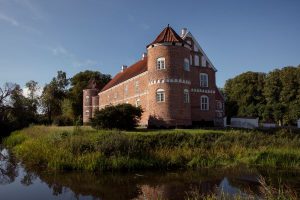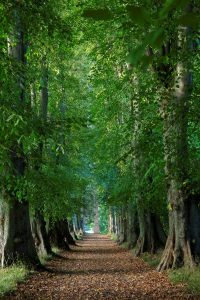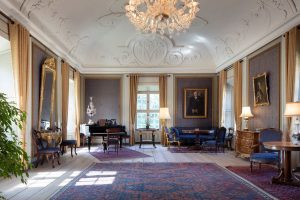New book: LØVENHOLM
Løvenholm Manor has a long and fascinating history that stretches back to the late Middle Ages. The main building of the estate consists of two wings. One was built by a member of the Jutland noble family Banner in 1576, while the other was built in 1643 by the Holstein nobleman Christian Rantzau (1614-1663) of Breitenburg. For more than 100 years, the highly influential and powerful Rantzaus of Breitenburg owned Løvenholm. They mostly resided in Holstein (Germany) but established Løvenholm as their key possession in Jutland. From Løvenholm and the other Jutland estates owned by the Rantzau family, large flocks of oxen would be driven to Wedel near Hamburg each spring – here they would be sold, and the revenues would fill the coffers of the Rantzau family.
Despite their wealth and privileges, the descendants of Christian Rantzau did not fare well, and in the late 17th century, the estate fell into grave disrepair. Only in the latter half of the 18th century, under new bourgeois owners, did it get back on its feet. For a time, an elegant life unfolded at Løvenholm; the house was newly furnished, and the farm and field operations were modernized. Soon, however, the economy of the estate became strained again, and the story of the estate was one of ups and downs until the last private owner, Valdemar Uttental (1872-1951) ensured its survival by establishing the Løvenholm Fonden (the Løvenholm Foundation) that still runs the estate’s 3,480 hectares today and maintains the garden and the historic buildings.
LØVENHOLM is a broad, richly illustrated monographic presentation written in Danish. Main author Klaus Højbjerg, Academic Assistant at the Danish Research Centre for Manorial Studies, presents the general story of the estate and its owners, while coauthors PhD and Head of the Research Centre for Manorial Studies Signe Boeskov and conservation architect Bue Beck write about the household and the architectural history of the manor, respectively. Additionally, Academic Assistant at the Danish Research Centre for Manorial Studies Søren Broberg Knudsen and museum curator at Gammel Estrup – the Danish Manor and Estate Museum Anders Sinding have contributed to the book. Funding and archival resources were provided by the Løvenholm Fonden.
To order the book, go to: https://gammelestrup.dk/vare/loevenholm/
For further inquiries, contact: Klaus Højbjerg at: klh@gammelestrup.dk


